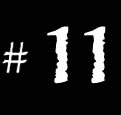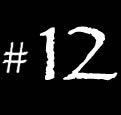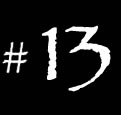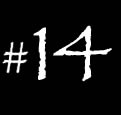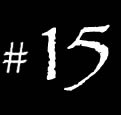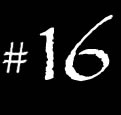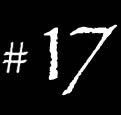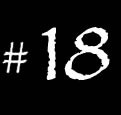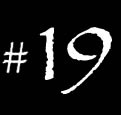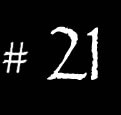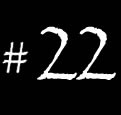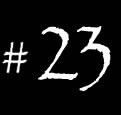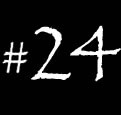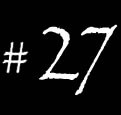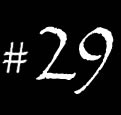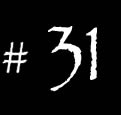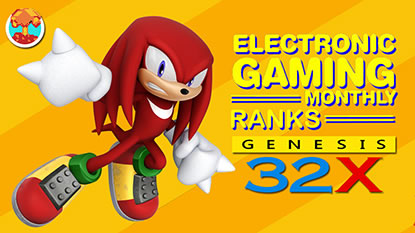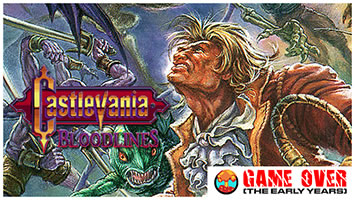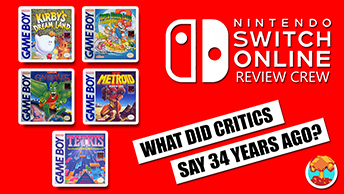- CLASSIC MAGAZINES
- REVIEW CREW
A show recapping what critics thought back
when classic games first came out! - NEXT GENERATION'S BEST & WORST
From the worst 1-star reviews to the best
5-stars can offer, this is Next Generation! - NINTENDO POWER (ARCHIVE)
Experience a variety of shows looking at the
often baffling history of Nintendo Power! - MAGAZINE RETROSPECTIVE
We're looking at the absolutely true history of
some of the most iconic game magazines ever! - SUPER PLAY'S TOP 600
The longest and most ambitious Super NES
countdown on the internet! - THEY SAID WHAT?
Debunking predictions and gossip found
in classic video game magazines! - NEXT GENERATION UNCOVERED
Cyril is back in this spin-off series, featuring the
cover critic review the art of Next Generation! - HARDCORE GAMER MAGAZING (PDF ISSUES)
Download all 36 issues of Hardcore Gamer
Magazine and relive the fun in PDF form!
- REVIEW CREW
- ELECTRONIC GAMING MONTHLY
- ELECTRONIC GAMING MONTHLY RANKS
From Mario to Sonic to Street Fighter, EGM
ranks classic game franchises and consoles! - ELECTRONIC GAMING MONTHLY BEST & WORST
Counting down EGM’s best and worst reviews
going year by year, from 1989 – 2009! - ELECTRONIC GAMING BEST & WORST AWARDS
11-part video series chronicling the ups and
downs of EGM’s Best & Worst Awards!
- ELECTRONIC GAMING MONTHLY RANKS
- GAME HISTORY
- GAME OVER: STORY BREAKDOWNS
Long-running series breaking down game
stories and analyzing their endings! - A BRIEF HISTORY OF GAMING w/ [NAME HERE]
Real history presented in a fun and pithy
format from a variety of game historians! - THE BLACK SHEEP
A series looking back at the black sheep
entries in popular game franchises! - INSTANT EXPERT
Everything you could possibly want to know
about a wide variety of gaming topics! - FREEZE FRAME
When something familiar happens in the games
industry, we're there to take a picture! - I'VE GOT YOUR NUMBER
Learn real video game history through a series
of number-themed episodes, starting at zero! - GREAT MOMENTS IN BAD ACTING
A joyous celebration of some of gaming's
absolute worst voice acting!
- GAME OVER: STORY BREAKDOWNS
- POPULAR SHOWS
- DG NEWS w/ LORNE RISELEY
Newsman Lorne Riseley hosts a regular
series looking at the hottest gaming news! - REVIEW REWIND
Cyril replays a game he reviewed 10+ years
ago to see if he got it right or wrong! - ON-RUNNING FEUDS
Defunct Games' longest-running show, with
editorials, observations and other fun oddities! - DEFUNCT GAMES QUIZ (ARCHIVE)
From online quizzes to game shows, we're
putting your video game knowledge to the test!- QUIZ: ONLINE PASS
Take a weekly quiz to see how well you know
the news and current gaming events! - QUIZ: KNOW THE GAME
One-on-one quiz show where contestants
find out if they actually know classic games! - QUIZ: THE LEADERBOARD
Can you guess the game based on the classic
review? Find out with The Leaderboard!
- QUIZ: ONLINE PASS
- DEFUNCT GAMES VS.
Cyril and the Defunct Games staff isn't afraid
to choose their favorite games and more! - CYRIL READS WORLDS OF POWER
Defunct Games recreates classic game
novelizations through the audio book format!
- DG NEWS w/ LORNE RISELEY
- COMEDY
- GAME EXPECTANCY
How long will your favorite hero live? We crunch
the numbers in this series about dying! - VIDEO GAME ADVICE
Famous game characters answer real personal
advice questions with a humorous slant! - FAKE GAMES: GUERILLA SCRAPBOOK
A long-running series about fake games and
the people who love them (covers included)! - WORST GAME EVER
A contest that attempts to create the worst
video game ever made, complete with covers! - LEVEL 1 STORIES
Literature based on the first stages of some
of your favorite classic video games! - THE COVER CRITIC
One of Defunct Games' earliest shows, Cover
Critic digs up some of the worst box art ever! - COMMERCIAL BREAK
Take a trip through some of the best and
worst video game advertisements of all time! - COMIC BOOK MODS
You've never seen comics like this before.
A curious mix of rewritten video game comics!
- GAME EXPECTANCY
- SERIES ARCHIVE
- NINTENDO SWITCH ONLINE ARCHIVE
A regularly-updated list of every Nintendo
Switch Online release, plus links to review! - PLAYSTATION PLUS CLASSIC ARCHIVE
A comprehensive list of every PlayStation
Plus classic release, including links! - RETRO-BIT PUBLISHING ARCHIVE
A regularly-updated list of every Retro-Bit
game released! - REVIEW MARATHONS w/ ADAM WALLACE
Join critic Adam Wallace as he takes us on a
classic review marathon with different themes!- DEFUNCT GAMES GOLF CLUB
Adam Wallace takes to the links to slice his way
through 72 classic golf game reviews! - 007 IN PIXELS
Adam Wallace takes on the world's greatest spy
as he reviews 15 weeks of James Bond games! - A SALUTE TO VAMPIRES
Adam Wallace is sinking his teeth into a series
covering Castlevania, BloodRayne and more! - CAPCOM'S CURSE
Adam Wallace is celebrating 13 days of Halloween
with a line-up of Capcom's scariest games! - THE FALL OF SUPERMAN
Adam Wallace is a man of steel for playing
some of the absolute worst Superman games! - THE 31 GAMES OF HALLOWEEN
Adam Wallace spends every day of October afraid
as he reviews some of the scariest games ever! - 12 WEEKS OF STAR TREK
Adam Wallace boldly goes where no critic has
gone before in this Star Trek marathon!
- DEFUNCT GAMES GOLF CLUB
- DAYS OF CHRISTMAS (ARCHIVE)
Annual holiday series with themed-episodes
that date all the way back to 2001!- 2015: 30 Ridiculous Retro Rumors
- 2014: 29 Magazines of Christmas
- 2013: 29 Questionable Power-Ups of Christmas
- 2012: 34 Theme Songs of Christmas
- 2011: 32 Game Endings of Christmas
- 2010: 31 Bonus Levels of Christmas
- 2009: 30 Genres of Christmas
- 2008: 29 Controls of Christmas
- 2007: 34 Cliches of Christmas
- 2006: 33 Consoles of Christmas
- 2005: 32 Articles of Christmas
- 2004: 31 Websites of Christmas
- 2003: 29 Issues of Christmas
- 2002: 28 Years of Christmas
- 2001: 33 Days of Christmas
- NINTENDO SWITCH ONLINE ARCHIVE
- REVIEW ARCHIVE
- FULL ARCHIVE
An Unholy Return: The 31 Games of Halloween
Adam Wallace thought evil had been defeated. After battling The Unholy 13, he thought the worst was behind him. Adam was wrong. The scares are back in An Unholy Return: The 31 Games of Halloween!
Join Adam as he goes up against a new batch of horror-themed games in his biggest, bloodiest battle yet. He'll be reviewing a different scary game every day in October, leading up to an epic finale on Halloween. Get ready for zombies, vampires, demons, aliens and all of your worst fears come to life as he delves deep into classic horror games on the Genesis, Super NES, Atari 2600, Odyssey 2, Nintendo Entertainment System, PlayStation 2, GameCube and more. Will Adam be able to defeat evil once and for all? Find out in the year's biggest rematch.
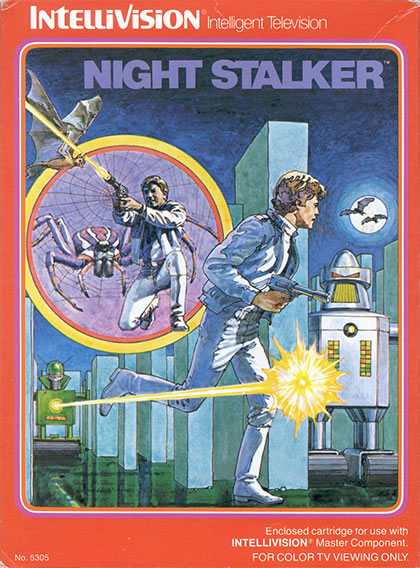
As I mentioned when I reviewed Haunted House, atmosphere was still possible to provide even with the limited technology of second-gen hardware. It just required creative design. Night Stalker managed to pull off decent atmosphere for the time, and its gameplay even held up reasonably well with checked expectations.
Night Stalker puts the player in a dark cave with spiders, bats, and robots with the simple goal of surviving as long as possible. A gun is available, but it only provides six shots. It respawns in random spots only when the player runs out, adding to the tension. Only the robots can kill you, but the spiders and bats can freeze you in place for a few seconds. Later robots (that strangely look like the Daleks from Dr. Who) get faster, gain shields, and get more relentless in their pursuit. [READ FULL REVIEW]
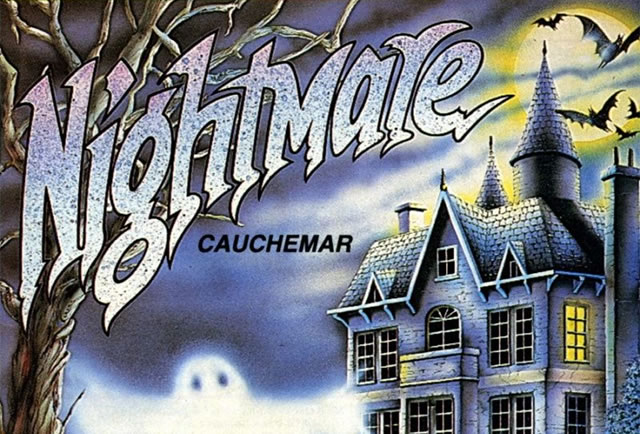
Even though I am VERY well-versed on the major consoles of the second generation (Atari 2600, Intellivision, and ColecoVision), I had not gotten to play the Odyssey 2 until recently. Unfortunately, early impressions have not been positive. Computer Golf annoyed the hell out of me. I hoped that the second game I tried Nightmare would improve my perception of the Odyssey 2 console, but no such luck. Nightmare is the only horror-themed game on the Odyssey 2, and it does pull off a decent atmosphere for the era. [READ FULL REVIEW]
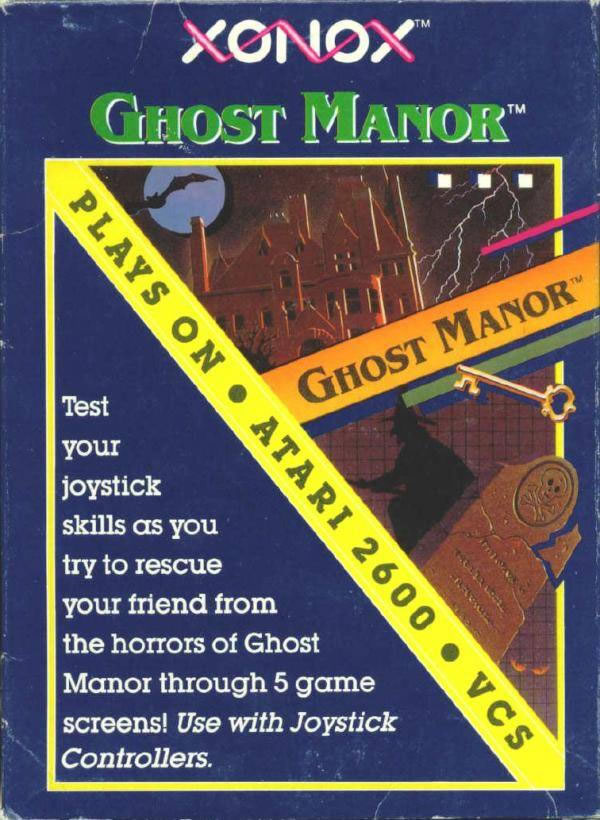
In the 1980s, beating a game was considered the ultimate bragging right. Most people associate that with the Nintendo Entertainment System as the games, while short in terms of overall length, were designed to be too hard to beat in a rental period. However, during the second gen, beating a game was a milestone simply because very few games had definitive ends. Most were designed with the arcade mentality, keeping going and getting harder until the player loses all of his/her lives. Only a handful of games on the Atari 2600 could be "beaten," and Ghost Manor was one of those few. It's also the very first game I ever finished, and returning to it over thirty years later brought back plenty of enjoyment. The goal in the game is very simple. [READ FULL REVIEW]
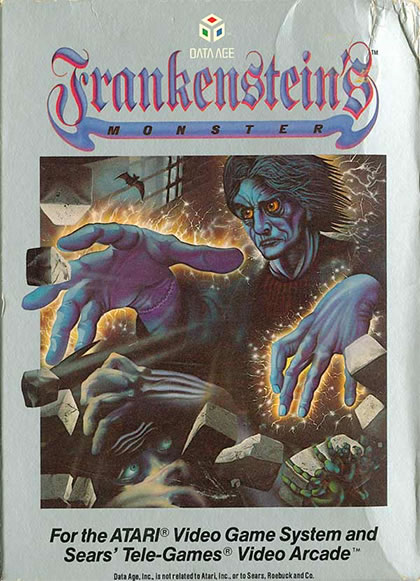
The company Data Age was a purveyor and a victim. They had plenty of technical mastery of the Atari 2600 hardware along the same lines as Imagic. The eight games that company produced in 1982 and 1983 were stunning achievements that still impress today, even outshining Atari's first-party titles. Unfortunately, Data Age made the same fatal mistake that took down Atari the following year. They spent a lot of money licensing the band Journey for the game Journey Escape (which wasn't a bad game at all if you remember my review of it), but the game didn't sell well enough to make up for the costs of the licensing. It's a similar scenario to E.T. except Journey Escape was actually finished and not just rushed out the door to meet a deadline. After that screw-up, Data Age was on borrowed time, pushing out games hoping to recoup their losses. [READ FULL REVIEW]
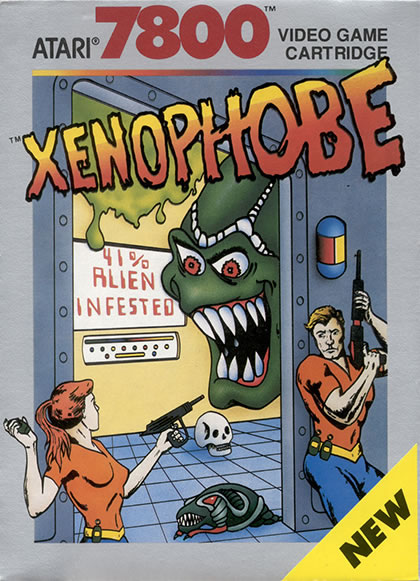
The movie Alien was a game-changer when it premiered in 1979. To this day, it is considered the greatest sci-fi horror film ever made. Despite that, for years afterward, there was only one official Alien game, an okay Pac-Man clone on the Atari 2600. When such an opening exists, it's inevitable that rip-offs start showing up to cash in. Enter Xenophobe. This arcade port involves boarding space stations to destroy aliens before they can be overrun. There are three ways for a stage to end: all the aliens could be destroyed, half can be destroyed followed by finding and hitting the self-destruct button, or the time can run out. Bonus points are given based on the outcome which is a neat idea. You start with a pistol but can find various improved weapons that are randomly placed each time you play. [READ FULL REVIEW]
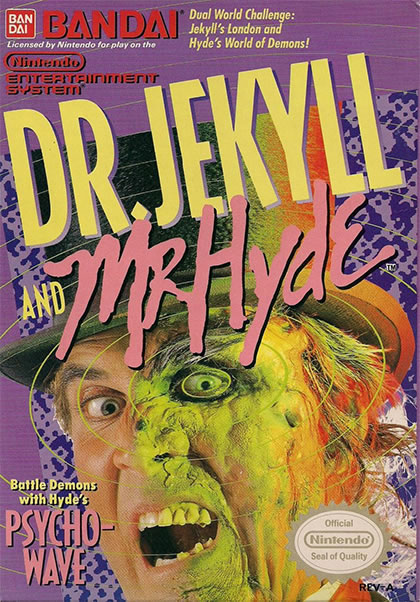
The Internet has been one of the greatest inventions in history. Not only has it brought people together and made idea exchange the easiest it has ever been, but it has also brought to light many obscure things from the past. Games that were largely ignored when they released became infamous years later after online videos and reviews became commonplace. Dr. Jekyll & Mr. Hyde gained infamy that way, and, after playing it myself, it definitely deserved it.
The goal of the game is to get Dr. Jekyll to his wedding while keeping his evil alter-ego Mr. Hyde at bay. That turns out to be a lot harder than it sounds as just about everyone in England is out to either kill him or send him into a frenzy as Hyde. All Dr. Jekyll can do... repeat, ALL that Dr. Jekyll can do is jump and TRY to dodge the relentless attacks. [READ FULL REVIEW]
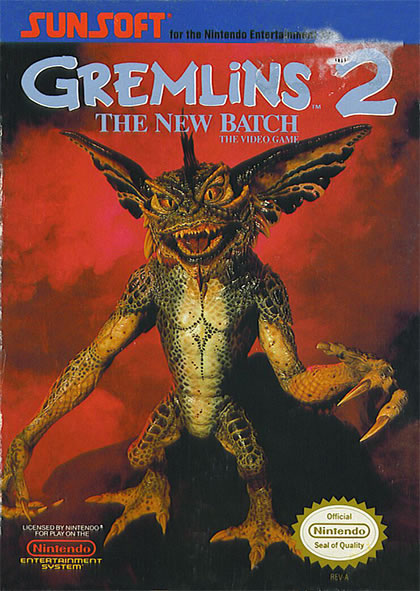
It's a painfully common belief that games based on movies tend to suck, and it is a true sentiment for the most part. However, some licenses have proven to be more successful than expected. There are plenty of good James Bond and Batman games, for example. One license that pleasantly surprised me is Gremlins. I reviewed the Gremlins game on the Atari 5200 last year, and it turned out to be one of the best original games on the system. This year I looked at the Nintendo game based on the second Gremlins film and enjoyed myself again. What are the odds?
You play as Gizmo, the adorable little mogwai, and your goal is to wipe out the Gremlins. The game plays as an isometric platformer/shooter hybrid. It's kind of like Sunsoft's Fester's Quest though, fortunately, nowhere near as tedious. [READ FULL REVIEW]
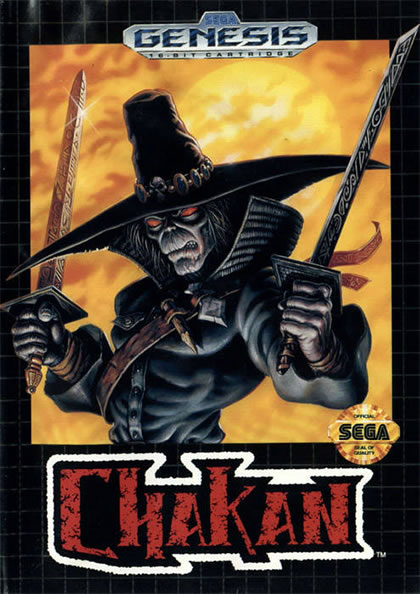
How hard is too hard? I always have to ask that whenever I play a good chunk of the games from the third and fourth generations. That particularly sucks since those generations had some truly awesome games that are hard to appreciate due to their outright insane level of difficulty. It always hurts when I have to put a game in that category, and having to put Chakan: The Forever Man into that group is even more torturous than trying to beat it.
Based on a comic book, Chakan is about a warrior who got too cocky about his success, even saying he could beat Death himself. Sure enough, Death took that as a challenge and appeared, promising eternal life if Chakan won. Chakan succeeded but missed the fine print on the deal that made him a supernatural bounty hunter for all eternity. [READ FULL REVIEW]
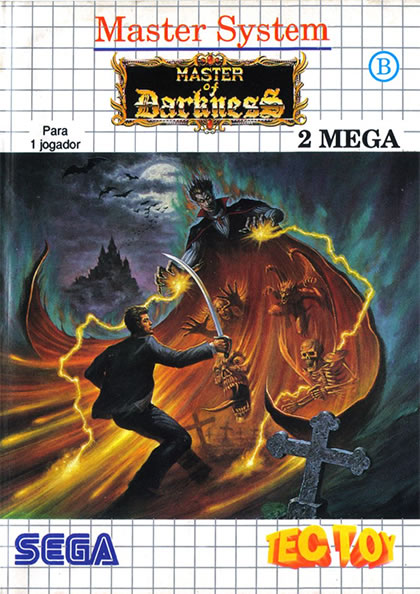
Castlevania and its 8-bit sequels were huge hits on the Nintendo Entertainment System. Sega definitely noticed that success. Unfortunately, Nintendo's monopolistic business practices at the time ensured that the Sega Master System would never get any Castlevania action of its own. Out of necessity, Sega themselves created Vampire: Master of Darkness to fill the "horror-themed platformer" hole in that system's library. While it doesn't quite match up to the exploits of the Belmont clan, it does provide an enjoyable enough undead romp of its own.
You play Dr. Ferdinand Social (seriously, that name sucks), and you're on a quest to destroy Dracula. Even though the premise is a straight rip-off of the original Castlevania, there are a few unique elements. [READ FULL REVIEW]
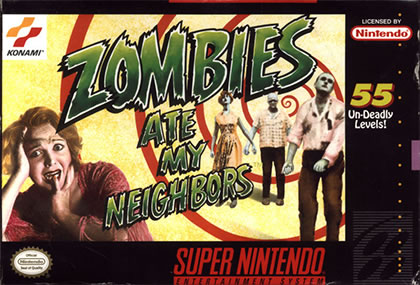
Okay, I know what you must be thinking right now. "Adam, why didn't you review Zombies Ate My Neighbors BEFORE reviewing its sequel Ghoul Patrol? ESPECIALLY if you were going to be comparing them?" Well, I reviewed Ghoul Patrol last year because fewer people knew about it. When I decided to cover 31 games for Halloween this year, I decided to give the original game another run as I hadn't played it in twenty years. After playing Zombies Ate My Neighbors again, I can say that it has held up well in some ways. [READ FULL REVIEW]
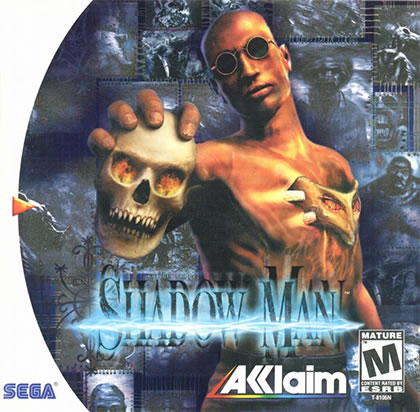
To say that Acclaim was very hit-or-miss would be one of the biggest understatements in video game history. Unlike their longtime subsidiary LJN whose output ranged from "average" to "sheer torture," Acclaim has had several times that they produced gold like Alien Trilogy countered by times that royally sucked like Total Recall. The worst times were when they had the potential for greatness but a few bad decisions kept them from it. For an example of that, look at Shadow Man. Shadow Man had me stoked just from the premise alone. Based on a comic book that I never got a chance to read, it's about a guy named Michael LeRoi who, through voodoo mysticism, became ... [READ FULL REVIEW]
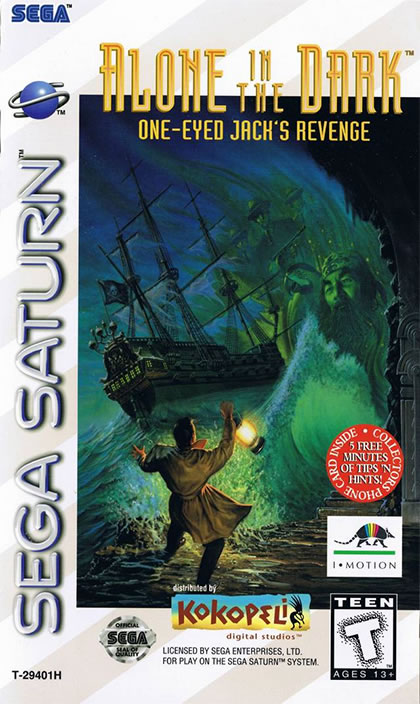
Nostalgia can be a funny thing. While it can help maintain appreciation for older things, it can also blind people to the flaws inherent in those older things. For the record, I have no nostalgic connection to the Alone in the Dark franchise; I didn't play these games when they were brand new. I have no rose-tinted goggles for these games; so, the flaws are plain as day for me. I was very disappointed when I played the fourth game The New Nightmare on the Dreamcast and thought that my perception would change if I tried one of the earlier games. After playing the second game One-Eyed Jack's Revenge, I have to wonder why the series was EVER a big deal to begin with.
Alone in the Dark: One Eyed Jack's Revenge revolves around an element that should've been completely impossible to screw up... pirate zombies. These pirates led by One-Eyed Jack gained immortality due to voodoo magic and had become gangsters by 1924 where the story picks up. [READ FULL REVIEW]
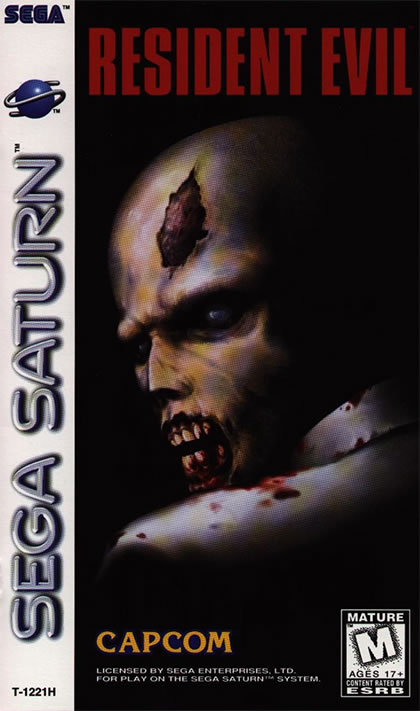
I'm not going to beat around the bush; the Playstation royally kicked the Saturn's ass. Thanks to one of the most royally botched launches in video game history, third-party developers fled the Sega Saturn in record time. There were a few who stuck around, and one of the most prolific was Capcom. Their 2D fighting games were doing well on the Saturn (better than on the PS1); so, they felt safe answering Saturn fans' demands to bring their landmark horror game Resident Evil to the Saturn. While it doesn't match up to the Director's Cut that hit the Playstation the same year, it's still one of the best games on the Saturn.
Everyone knows the plot of the original Resident Evil by now. After a string of cannibalistic murders in the woods near Raccoon City, a Special Forces police unit is sent to investigate. They get chased by blood-thirsty dobermans into a secluded mansion where the residents got turned into zombies due to a lab accident. [READ FULL REVIEW]
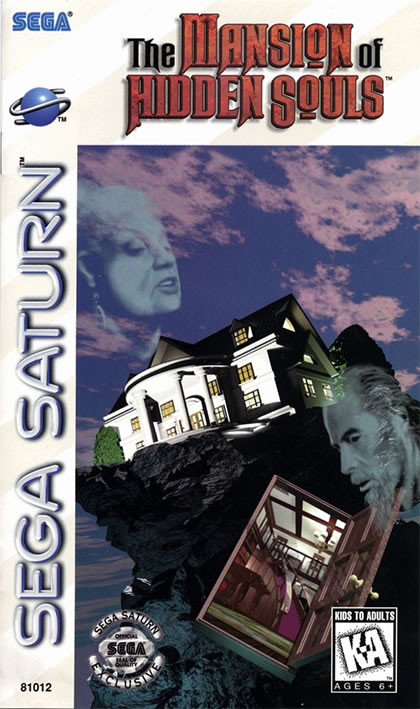
Mansion of Hidden Souls on the Sega CD was one point-and-click adventure that I found next to impossible to play. It's not that the game was difficult but that it clearly was too much for the Sega CD to handle. The heavily pixelated visuals and slideshow framerate gave me a throbbing headache in less than five minutes. When I found out that a "remake" was on the Saturn, I thought that was the perfect way to see what worked about it without inferior hardware getting in the way. Man, I was so wrong.
First of all, THE Mansion of Hidden Souls (we can't ignore the article here) is NOT a remake of the Sega CD game; it's actually the sequel. In this one, you are already trapped in the mansion as a butterfly (which is what happened in the first game if you took too long to complete it). You and a friend have been summoned by the Elder of the house (the protagonist from the first game) to investigate strange goings-on in the mansion. [READ FULL REVIEW]
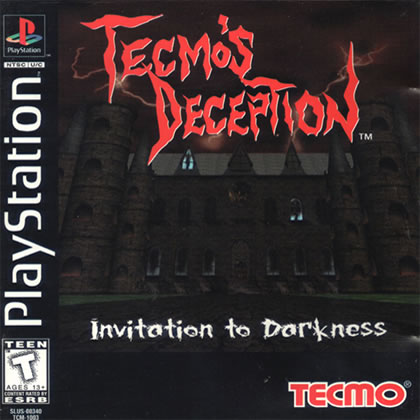
Okay, what's the first thing you think of when you hear the name of the company Tecmo? Most likely thoughts went straight toward insanely difficult ninja action or fighting games starring breasts that defy all laws of physics. However, Tecmo had other games and series besides Ninja Gaiden and Dead or Alive. One of their more niche series is the Deception games, a strategy series that provided better torture porn than the games based on the Saw movies. In fact, by the fourth game on Playstation 4, players could become total sadists with their set-ups. By those standards, the original game seems quaint but is still a good way for players to see how sick their minds can get. [READ FULL REVIEW]
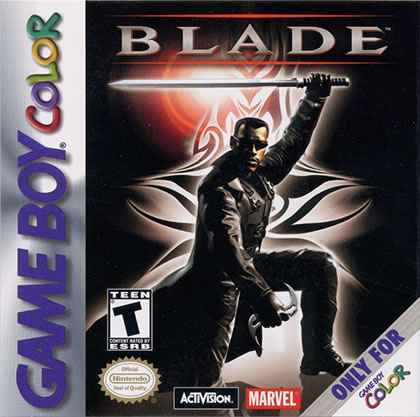
It's a long established fact that nine out of ten games based on a movie tend to suck. The quality of the movie matters little in how well the game adaptation ends up. The disappointment is an intangible quality; it just feels more painful when a great movie produces a crap game. Of course, there have also been great games based on poor movies like the case of X-Men Origins: Wolverine. Seriously, I didn't know what to expect when I plugged in the Game Boy Color adaptation of the movie Blade. The movie was average at best, a mix of well-choreographed fight scenes and plot-hole-ridden storytelling. After playing, I consider it a perfect adaptation in that it is just as average as the movie. [READ FULL REVIEW]
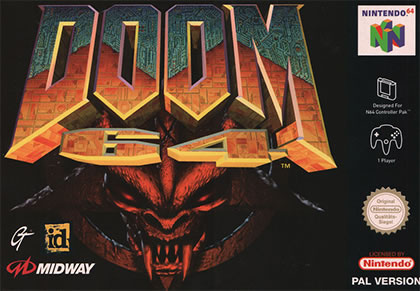
Transitional periods have always been the hardest times for established series. It's the awkward time between the old and the new. When talking about the Doom franchise, there was the insane blast-a-thon period shown in the first two games, and there was the atmospheric horror-focused period shown in Doom 3. That awkward transition period is represented by Doom 64. Doom 64's plot is nothing special. Doomguy's mission of mopping up the remaining demons on Phobos and Deimos is astonishingly paper-thin, and Doom has never been known for epic plots, not even the one that released in 2016. [READ FULL REVIEW]
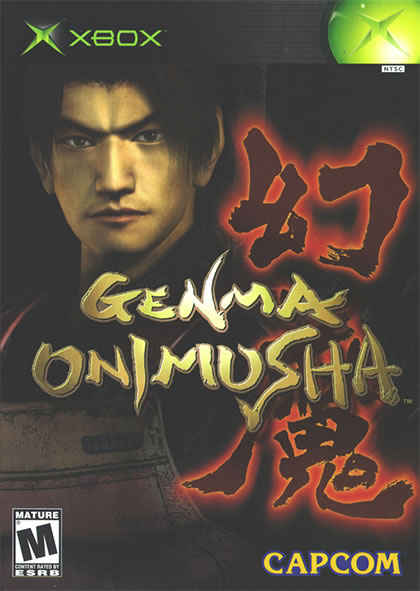
The original Xbox had a tough time during its launch window. Many detractors referred to the system as the "Port-Box", believing that, aside from Halo, the only things worth playing were ports from the Playstation 2. I disagree with that assessment; did they not notice Munch's Oddyssey and Project Gotham Racing? That said, the Xbox did get some enhanced ports that were well worth grabbing, one of which was Genma Onimusha. Genma Onimusha is an expanded port of Onimusha: Warlords which released on the PS2 a year prior. The premise of the game can be summed up in five words -- "Resident Evil in Feudal Japan". You play a samurai named Samanosuke tasked with rescuing Yuki, princess of the Saito Clan, from a demon army commanded by Nobunaga Oda. The plot is much thinner than Resident Evil's. [READ FULL REVIEW]
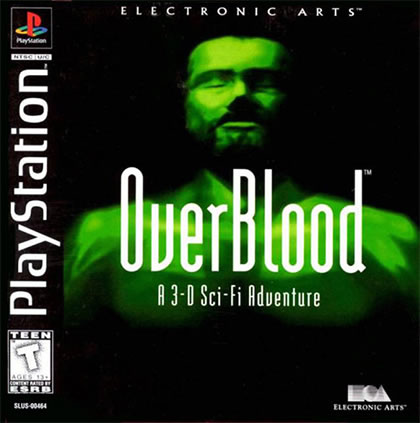
Comparisons can be very unfair. When Resident Evil became one of the biggest success stories of the first year of the PlayStation's lifespan, suddenly every game with horror in it ended up compared to Capcom's juggernaut. In fact, I first became aware of EA's OverBlood after reading a review from its release that spent half of the review saying that it sucked because it didn't match Resident Evil beat-for-beat. After playing it, I can definitely say that it is far different from Resident Evil and shouldn't have been compared to it. That doesn't mean it's a forgotten horror classic, though. OverBlood focuses on a guy named Raz who wakes up from cryogenic sleep in a facility that's mostly deserted with no memory of who he is. [READ FULL REVIEW]
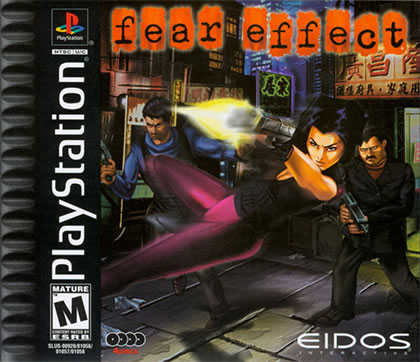
As I said before, the fifth generation was a transitional period in video game history. Most people just think of the switch from 2D to 3D, but it's more than that. It's also a change from primarily catering to kids to appealing to adults. There were M-rated games on Genesis and Super Nintendo as well as the embarrassing interactive pornos on the 3DO, but the Playstation was one of the first consoles to bring truly adult themes to gaming. Fear Effect is a prime example of that. The best description for Fear Effect would be "interactive anime", and the plot and style fit that description. [READ FULL REVIEW]
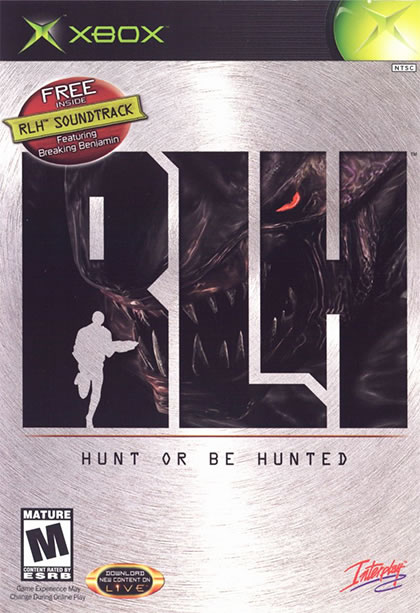
Remember Aliens: Colonial Marines? Remember how it spent years in development hell only to come out in a state worse than the E3 trailers? That game broke the hearts of tons of fans of the Alien franchise, but it really shouldn't have bothered them. There was, after all, already a damn fine game for blasting aliens that was playable on the Xbox 360 and even featured Bishop in the lead... or, at least, the guy who played Bishop. It's a largely forgotten game called Run Like Hell. Run Like Hell, abbreviated as RLH, takes place on a space station. Players take control of Capt. Nick Connor, a mining surveyor, who heads off on a mining operation only to return later to find the station overrun with aliens. With most of the crew dead and his fiancee missing, Connor launches a one-man war against the not-quite-xenomorphs. The plot is relatively basic but engaging like any great sci-fi action movie. [READ FULL REVIEW]
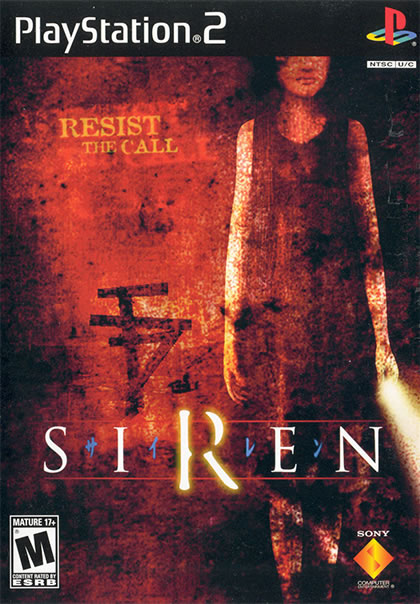
One of the key elements for any good horror game is a feeling of helplessness. The best horror games have that regardless of the amount of action within them. Resident Evil trapped players in a secluded mansion. Silent Hill kept the players' view limited. Outlast gave players no means to fight the psychos. However, in those examples, players were provided with the tools and the direction needed to proceed. Unfortunately, that's not the case with Siren. Siren definitely got the plot and atmosphere parts right. The plot involves an isolated town in Japan that is under the influence of rituals by a cult. When one such ritual is interrupted, ten survivors are hunted down by shibito, creatures who are not quite human and not quite zombies. The story is told out of chronological order, hopping timelines and switching perspectives to see what's happening to all ten of the survivors. [READ FULL REVIEW]
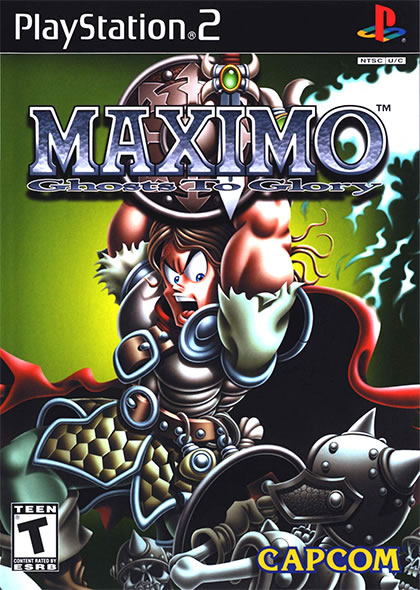
Since the 8-bit era, Capcom has had the reputation of making hardcore games for hardcore gamers. Though they've had plenty of exceptionally hard games over the years, the one series that has demanded gaming godhood the most was the Ghosts and Goblins series. Every game in that series demanded outright masochism from players thanks to elements ranging from Red Devils that chase you through the whole level to the infamous ending that forces a second playthrough. That level of insanity would be virtually impossible to transfer into a 3D world, but Capcom gave it a good try with Maximo: Ghosts to Glory. For the record, Maximo is a spin-off from the Ghosts and Goblins series, not a sequel. Rather than just rescuing one princess from the Devil like Arthur did, Maximo has to rescue four sorceresses in addition to his queen from the evil King Achille. [READ FULL REVIEW]
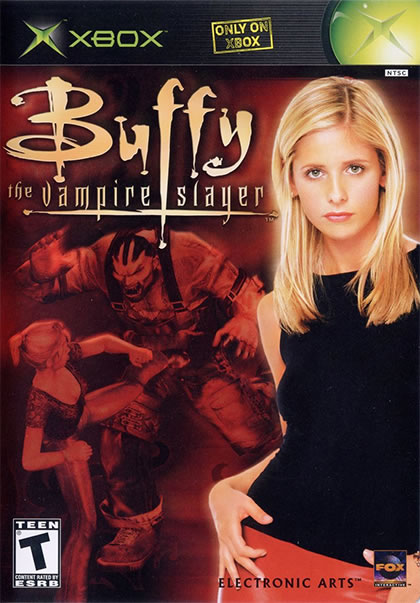
When I reviewed Wrath of the Darkhul King last year, I admitted that I had never watched the Buffy the Vampire Slayer TV show. I played and reviewed that game on the basis that I thoroughly enjoyed the two Xbox games that came before it. Since then, I have watched through the first two seasons of the show and really enjoyed them. I now own the whole series and look forward to continuing through it. With this fresh perspective, I went back to the original Buffy game on the Xbox to see if it still holds up. Fortunately, while not perfect, it's still a great experience for fans of the Slayer. Story-wise, the game couldn't be any more authentic. Taking place after the first couple seasons, Buffy falls into a plan by the Order of Aurelius to resurrect the Master. If that sounds Greek to you, don't worry. There's a full exposition dump narrated by Giles (accessible from the main menu) to get the uninitiated up to speed on the goings-on in Sunnydale. [READ FULL REVIEW]
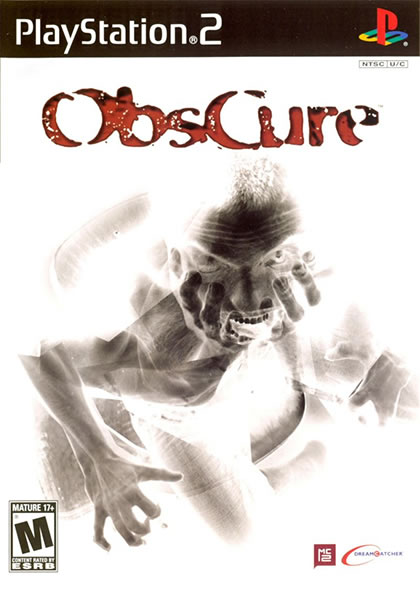
By the sixth generation, video gaming was becoming as cinematic as movies. As such, many of the tropes that for decades were reserved for film started to show up in video games for the simple reason that it was possible to use them at that point. With that in mind, I'm amazed that it took until 2005 for one of horror's biggest tropes, the group of diverse teenagers, to make it into a game. While the game in question Obscure doesn't take full advantage of the trope, it's still a good survival horror game. The story in Obscure is very ridiculous, but it works. Five students get trapped in their high school one evening and have to contend with plant-based mutant experiments that got unleashed. It's all the ridiculousness of the movies The Faculty and The Happening combined. While the plot is rather stupid, the game sells it well with the writing. [READ FULL REVIEW]
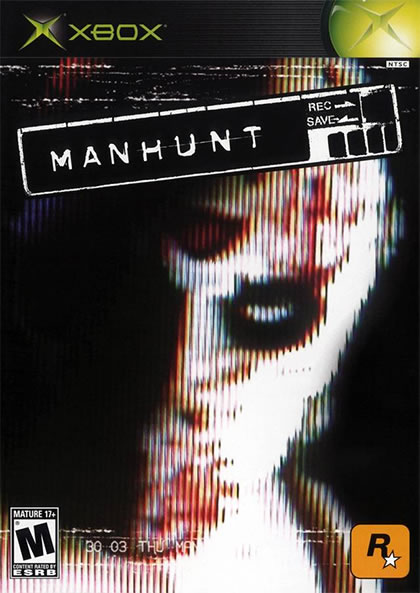
No video game company has courted more controversy than Rockstar. Thanks to the Grand Theft Auto franchise, the company became the scapegoat for just about all the evils of the world. However, Rockstar had proven to be stellar developers who manage to create intriguing games that tackle dark and risky subject matter in an intelligent way. After the mega-success of the first 3D entries in the Grand Theft Auto franchise, attention turned toward Manhunt, and my opinion is very split between its very interesting concept and its very flawed execution. Manhunt revolves around a subject designed to give people the creeps: snuff films. The game centers on a death row inmate named James Earl Cash who is spared execution by an underground director. The payment for this apparent act of benevolence is for Cash to mercilessly slaughter others to provide footage for the director's newest snuff film. [READ FULL REVIEW]
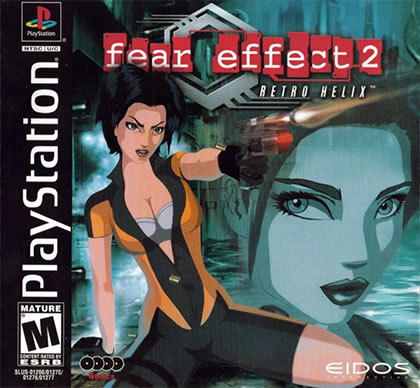
Advertising for games can be problematic to say the least. Looking back at old print ads, it seems that when it came time to promote the sequel to Fear Effect, all Eidos wanted to show off was Hana and her lesbian lover Rain in suggestive poses. I understand that Eidos wanted to promote how Fear Effect 2: Retro Helix was going more adult than any console game before it, but they really should've been promoting how much the sequel improves on the original instead. Fear Effect 2 is a prequel to the original game. The plot details how Hana, Glas, and Deke (the team in the original) came together to find a cure for a disease that mutates people into grotesques. [READ FULL REVIEW]
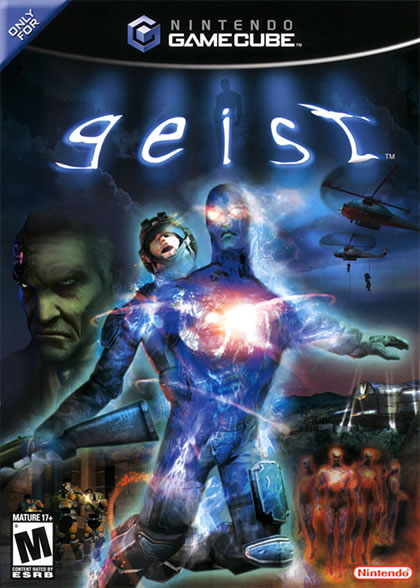
I remember a Dreamcast game called Omikron: The Nomad Soul (which was reviewed on this site years ago). It was a game about ghostly possession that had a few neat ideas surrounded by mediocrity. I guess n-Space was inspired by it because they went to Nintendo with a plan to streamline that concept into a tighter experience. The end result is a GameCube exclusive called Geist which did handle the possession concept better than Omikron but needed more work to become a great game. Geist revolves around a scientist named Raimi who was investigating a disappearance within a corporate stronghold. After an attack by a monster, Raimi is captured, and his soul is removed from his body. Helped by the ghost of a young girl, Raimi goes on a mission to reclaim his body and take down the corporation. [READ FULL REVIEW]
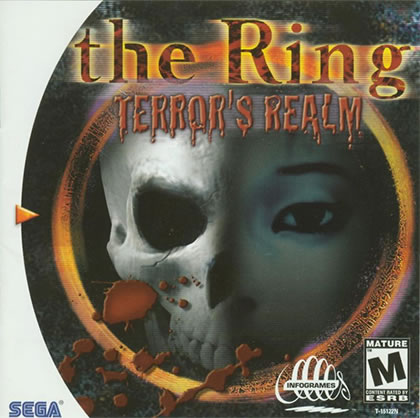
Why? Just... just why? Why did anyone think that making a game based on The Ring was a good idea? The movie about a haunted video tape that brought death in seven days to anyone who watches it was one of the greatest Japanese horror movies of all time, and the American remake starring Naomi Watts was very good, too. That plot just does not lend itself to a video game. Making a game based on The Ring is an even worse idea than making a game about dog food! Strangely enough, the game Terror's Realm is at least better than the idea itself, but that's not saying much. The premise at least is interesting. After her boyfriend dies under mysterious circumstances at the same time as three others, the protagonist Meg takes his job at the CDC. [READ FULL REVIEW]
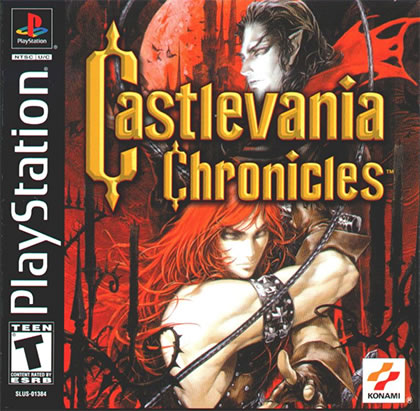
Castlevania: Symphony of the Night was, quite literally, a game-changer. Taking the open map of Metroid and infusing swords, magic, and experience points, that gem created a whole new genre. It seemed at that point that the traditional linear gameplay of the 8- and 16-bit entries of the series was dead. That was kind-of true. While there were no new games using the old style, there were still a couple of old games that the Americans missed the first time around, one of which was Castlevania Chronicles. Originally released on the Sharp X68000 computer, Castlevania Chronicles, like Super Castlevania 4 on the Super Nintendo, is a remake of the original game. [READ FULL REVIEW]
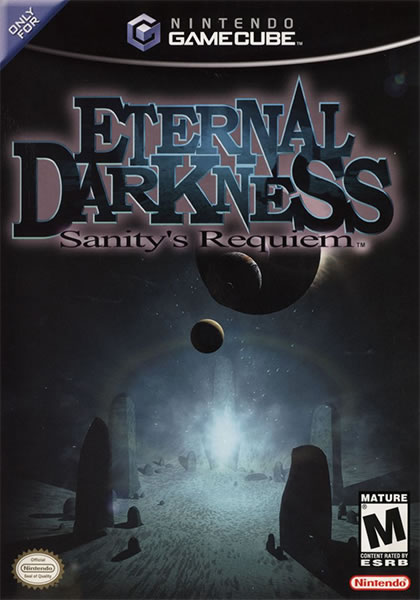
For over two decades, few companies were more family friendly than Nintendo. It was under protest that the Super Nintendo started getting M-rated games from the third parties; getting kicked in the wallet by Sega over the original Mortal Kombat can change executive decisions really quick. While Nintendo allowed third parties to put mature content on their consoles, they avoided making adult games of their own until 2002 when they published Eternal Darkness: Sanity's Requiem. Though that release seemed out of character for Nintendo, it showed that the Big N not only wanted to appeal to adults with their then-new GameCube but scare the living crap out of them, too. Eternal Darkness: Sanity's Requiem tells a tale that spans centuries. The connecting character is Alex, a young woman investigating her grandfather's murder. While searching his Rhode Island mansion, Alex finds a book bound in human flesh called The Tome of Eternal Darkness. [READ FULL REVIEW]
HOME |
CONTACT |
NOW HIRING |
WHAT IS DEFUNCT GAMES? |
NINTENDO SWITCH ONLINE |
RETRO-BIT PUBLISHING
Retro-Bit |
Switch Planet |
The Halcyon Show |
Same Name, Different Game |
Dragnix |
Press the Buttons
Game Zone Online | Hardcore Gamer | The Dreamcast Junkyard | Video Game Blogger
Dr Strife | Games For Lunch | Mondo Cool Cast | Boxed Pixels | Sega CD Universe | Gaming Trend
Game Zone Online | Hardcore Gamer | The Dreamcast Junkyard | Video Game Blogger
Dr Strife | Games For Lunch | Mondo Cool Cast | Boxed Pixels | Sega CD Universe | Gaming Trend
Copyright © 2001-2025 Defunct Games
All rights reserved. All trademarks are properties of their respective owners.
All rights reserved. All trademarks are properties of their respective owners.

















